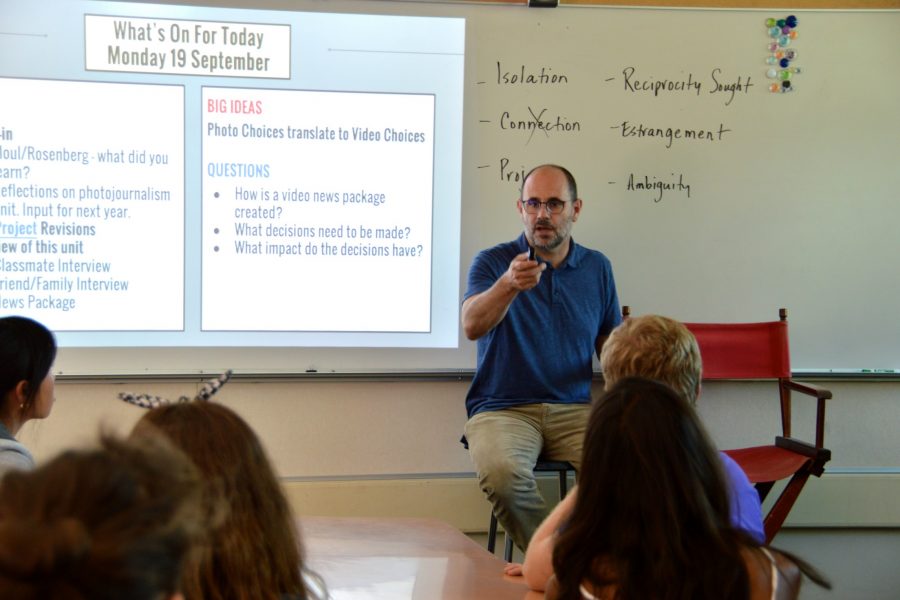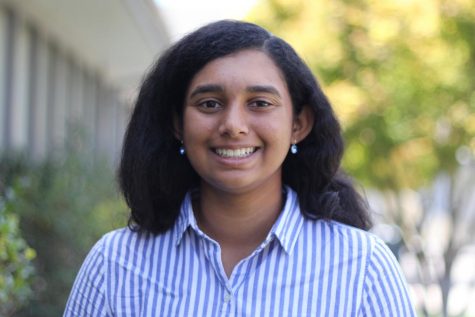New Media Literacy Explores Digital Stories
English teacher Robert Barker teaches the New Media Literacy class to students in room 401. Photo by Katie Klein.
English teacher Robert Barker created New Media Literacy as an alternate journalism elective to the school this year. The elective aims to teach students to analyze messages in news media and portray stories through photography, videography and podcasts.
The administration wished to add another journalism elective to let students pursue journalism while learning more media-centric lessons. Currently, the class is focusing on photojournalism.
“What Mr. Barker’s trying to do is to create a space for students to learn the skill set that they need if they decide to go into journalism, but also for the kids who have a passion about digital storytelling,” Principal Wynne Satterwhite said.
Barker expressed interest in teaching the elective after the administration voiced its intentions to create another journalism class with an emphasis on broadcasting.
“I have a personal interest in critical media literacy, so I thought it was a great opportunity for me to blend media literacy with broadcast journalism,” Barker said.
The class focuses on sifting through bias to analyze the motives behind media.
“We need to address media literacy because there’s so much information coming at us all the time,” Barker said. “Students aren’t always aware of how those messages get created, or if there’s a profit motive behind images they’re consuming.”
Former Editor-in-Chief of The Talon Sofia Guo ‘16 contributed to the class’ curriculum. After completing her senior project on media literacy, Sofia worked with Barker to compile resources for the elective last summer.
“This entire idea of teaching critical thinking skills to high schoolers was my dream in terms of being able to empower people with the ability to decipher messages that they would otherwise unconsciously accept,” Sofia said.
The class evaluates media through five pillars of media literacy: authorship, format, audience, content and purpose.
“Any time I’m looking at an image [I have to remember] somebody made it,” Barker said. “If I don’t think about why they made it, then I might be susceptible to being manipulated by that image.”
The class features interactive projects that challenge students to piece together their own stories. Barker aims to provide students with skills to pursue independent projects through a chosen medium.
The elective shrank from 28 to 18 students in August, which Barker attributes to scheduling issues because New Media Literacy only occupies a seventh period slot.
“If students have full schedules, or they’re trying to balance their schedule with their workload, it’s easy to say, ‘Maybe I like the class, but I want to take my seventh period back,’” Barker said.
However, the class size allows for a smaller student-to-equipment ratio. The convenience accentuates the hands-on aspect of the class.
“You go and do things for yourself,” sophomore Brooke Bettinger said. “Instead of just hearing about it, you’re practicing the [concepts].”
The main appeal of the class for students is the opportunity to craft their own digital stories.
“The most fun thing we’ve done is just being able to go out and look for stories,” sophomore Noah Tesfaye said. “The class makes you question your own environment.”




